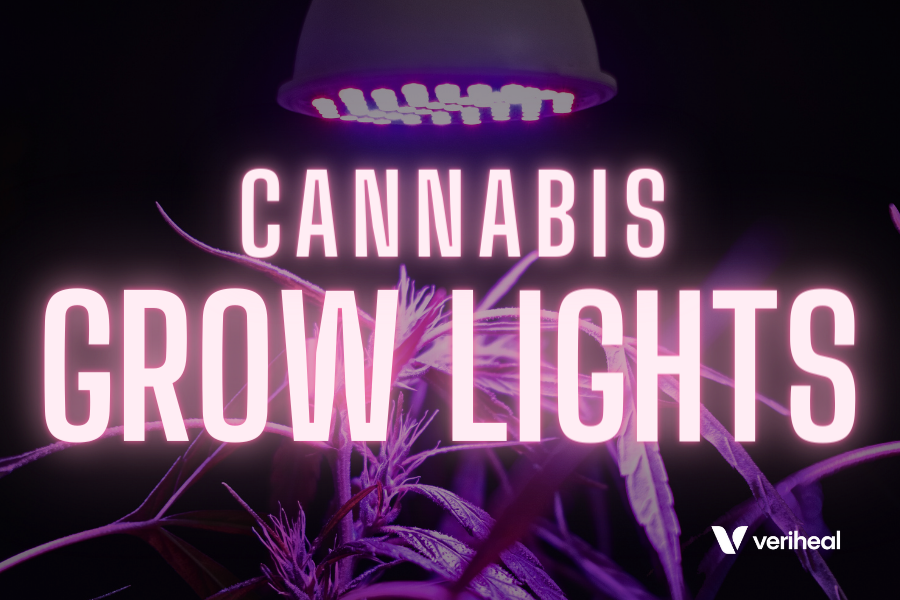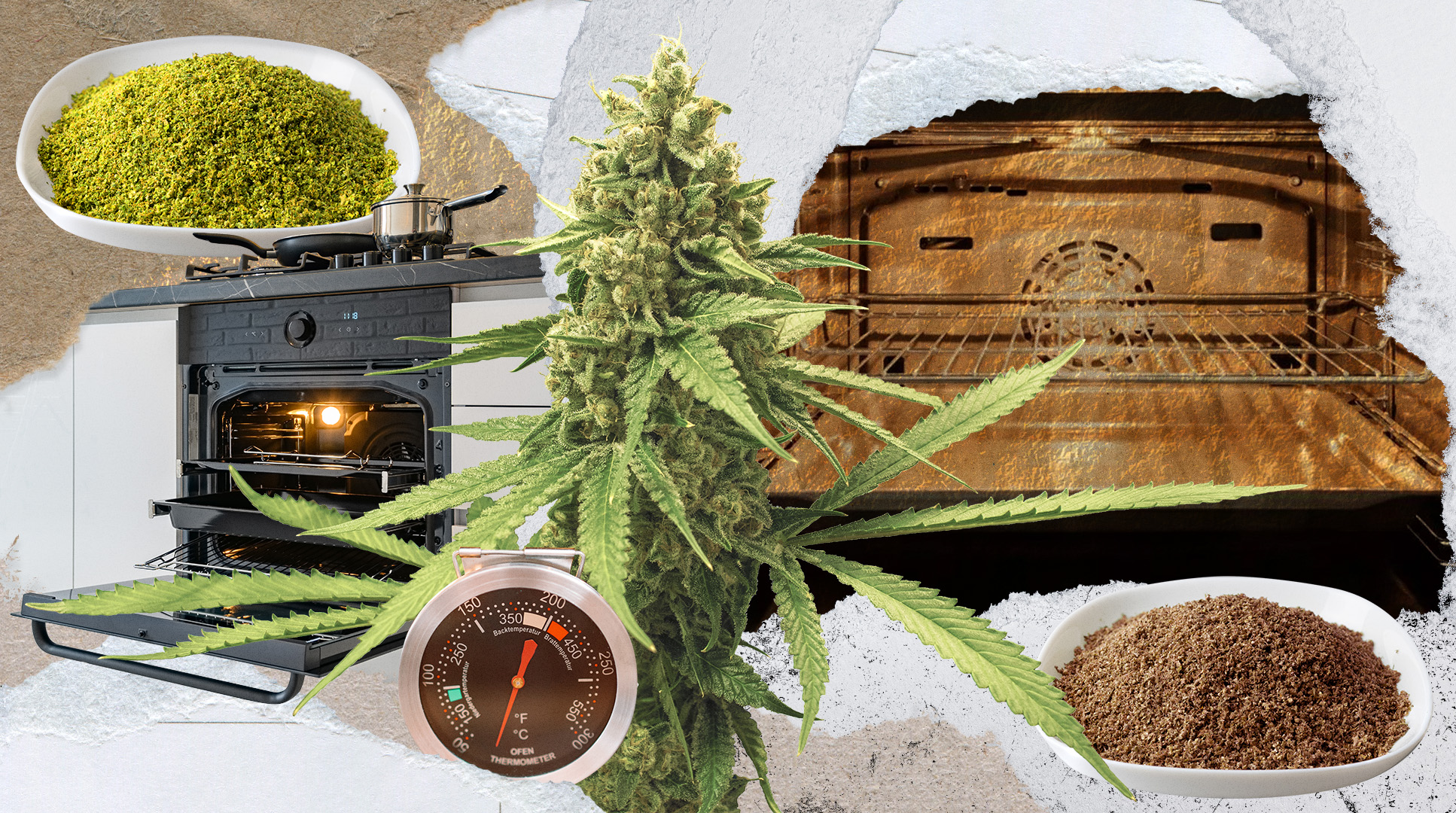Growing cannabis indoors is more popular than ever. Cannabis sales recently hit the $90 billion mark in the United States and are on track to clearing the $100 billion mark in the not-too-distant future. With the increased demand for cannabis, growers have perfected their toolkit for the ideal harvest: including the perfect cannabis grow lights.
- The Science Behind Cannabis Grow Lights
- Fluorescent Grow Lights
- High-Intensity Discharge Cannabis Grow Lights
- LED Grow Lights
- DIY Solutions and Supplementing Grow Lights
- Optimizing Growth Stages and Indoor Grow Spaces
The Science Behind Cannabis Grow Lights
To optimize your grow room, you have to replicate an outdoor environment. Many different factors must be carefully monitored, such as temperature, humidity, CO2 levels, pH of the soil, and much more.
One of the main things to consider before growing cannabis indoors is the type of lighting that will be used — cannabis growers understand that the right lighting solution is crucial for optimizing plant growth and cannabinoid production.
As we all know, Cannabinoids are the chemical compounds found in cannabis plants, including THC and CBD. These compounds play a significant role in the medicinal and recreational properties of cannabis.
To maximize cannabinoid production, indoor growers must provide the ideal lighting solution throughout the plant’s growth cycle. Just like there’s more than one way to grow cannabis, there’s more than one type of light to do it with. The importance of lighting correlates to the plant’s photosynthesis, the biological process by which plants convert light energy into chemical energy, providing the fuel needed for growth.
Cannabis plants are no exception, relying on photosynthesis to synthesize essential compounds. There’s not an abundance of options when it comes to lighting for cannabis cultivation.
And lastly, Indoor cannabis growers must strike a balance between light intensity and the right wavelengths to ensure optimal growth. Too much or too little light can have adverse effects on the plants.
There are basically three types of lights for growing cannabis. They are fluorescent, LED, and high-intensity discharge grow lights.
Fluorescent Grow Lights
If you have ever seen cannabis grown in small or tight spaces or remember some of the underground cannabis grows from back in the day, chances are you remember fluorescent lighting being used to cultivate cannabis.
Many times they were the long tubular light similar to a black light or a light you would find on top of a fish aquarium. They put off a soft light that provides a strong enough spectrum to cultivate cannabis indoors. These kinds of lights were typically used in very tight spaces and were extremely popular before other options began to surface and became affordable.
When using a fluorescent grow light, many people choose a CFL grow light which looks like a twisty straw bent onto the base of a light bulb. These bulbs are kept very close to the cannabis plant while the plants are growing. Where more room is available, T5 grow lights are typically used when imploring fluorescent grow lights. The T5 light for growing cannabis is a lot like what you would see in an office building or workshop. Some of the advantages are they are very cost-efficient and don’t produce a lot of heat. The downside is there are other options available that many will argue produce substantially better results.
High-Intensity Discharge Cannabis Grow Lights
A lot of commercial cannabis grows use high-intensity discharge grow lights or HID lights for short. These lights usually come in the form of strangely shaped light bulbs that are attached to hoods or reflectors with ventilation fans. The ventilation fans are attached to these lights because they are known to produce a lot of heat. This makes them more appropriate for large-scale cultivation inside of big rooms with tall ceilings. They come in the form of metal halide aka MH lights, ceramic metal halide aka LEC (light emitting ceramic) lights, and HPS aka high-pressure sodium lights.
Why You Should Get Your Medical Marijuana Card
Veriheal has satisfied millions of patients nationwide by giving them access to these benefits
- Larger purchase limits
- Peace of mind
- Enhanced legal protection
- Access to higher potency strains
- Save up to 25% on cannabis purchases
- Skip the line at the dispensary
MH lights are most commonly utilized during the vegetation stage. However, they can also be used all the way through harvest. They put off a bluish-toned light. Many people choose to switch to HPS grow lights during the flowering stage to help improve yields. Their claim to fame is that they produce better yields of cannabis per electricity used compared to virtually all other types of grow lights available on the market. CMH or LEC lights depending on what you call them, are another option that growers use in commercial spaces. These lights can also be used inside of grow tents when they are large enough.
HID lights for growing cannabis offer growers the potential of larger harvests. They are convenient and easy to hang with a set standard for the distance between lights and plants with no need to be adjusted. The downside of these bad boys is they generate quite a bit of additional warmth. They must be ventilated properly otherwise; they could pose a danger to your plants and the overall surrounding environment. They require a little bit more than other options beyond just having the light bulbs themselves, you will need exhaust systems, a fixture, cables, external ballast, and other parts to install and use them correctly.
LED Grow Lights
LED grow lights are extremely popular with commercial cannabis growers and very popular with home growers. LED lights offer growers an easy plug-and-grow option. A lot of LED grow lights have ventilation installed already. They have cycle options such as veg cycle, flowering cycle, and all. The veg cycle light is usually a more bluish light compared to the flowering cycle, which is more reddish or orangish in color. On many brands, there is an “all” light, which is a combination of the veg and flowering light spectrums.
It’s also worth mentioning that blue light and red light are two crucial components of the light spectrum that impact cannabis growth. Blue light is essential during the vegetative growth stage as it promotes leaf and stem development. In contrast, red light is crucial during the flowering stage, stimulating bud and flower formation.
LED lights do put off a little bit of heat. They also require more distance between them and plants. It is advised to keep LED lights 18 in away from your plants, although myself and many other growers like to keep that at 24 in. LED grow lights offer simplicity and ease. They are cooler than many other lights and often do not require additional ventilation or ductwork to be installed.
The yield from LED grow lights is said to be a little lower than other lights, but not everybody is trying to meet the demands of customers; some are just trying to meet their own demands. LED lights are also extremely efficient for electricity. The combination of low electricity cost, ease of use, and harvest results make these lights are a very popular option for home and commercial growers alike.
The best LED lights for growing cannabis offer a spectrum of light tailored to different cannabis growth stages. LED which stands for Light Emitting Diode technology is preferred by many growers for its energy efficiency, long lifespan, and low heat emission. These lights provide a high-quality lighting solution for indoor cannabis cultivation.
DIY Solutions and Supplementing Grow Lights
For enthusiasts looking to take a more hands-on approach, DIY solutions for grow lights can be an exciting option. By customizing LED diode setups, growers can tailor their lighting to suit their unique grow space and preferences. Supplementing with additional lighting during the flowering stage can also enhance yields and cannabinoid production.
My Personal Setup
LED grow lights are the option I chose to grow with at home. I use a 1500 watt full spectrum LED grow light that has a remote with temperature and humidity as well as timer cycles built-in. I place my plants under the veg cycle on an 18/6 schedule and run that all the way until I decide to switch them to flowering, which is a 12/12 hour light schedule. I stay away from the “all” light schedule as I find it tends to cause a little bit of light damage or light burn to my plants. This could just be because I am relatively new to cannabis cultivation still and learning the tricks of it.
I find that using a 4x4x8 grow tent with a 1500 watt LED light and inline ventilation fan, my temperature only averages about three to four degrees higher when the lights are on versus when they are off. If you’re looking to get started growing cannabis of your own at home, in my opinion, I’d recommend start with LED grow lights.
Optimizing Growth Stages and Indoor Grow Spaces
To wrap it all up, indoor cannabis cultivation allows for precise control over the growth cycle and environmental conditions. With the right lighting setup, indoor growers can ensure that their plants receive the right amount of light and spectrum at each growth stage. This level of control minimizes guesswork and maximizes yields. To add a bonus, the amount of light a cannabis plant receives directly influences the production of terpenes and trichomes, for the aroma, flavor, and potency of your cannabis. By providing the right light spectrum and intensity, growers can enhance the terpene profile and trichome development in their plants.
This article was originally published in July 2021 and most recently updated in September 2023.
Author, Share & Comments















